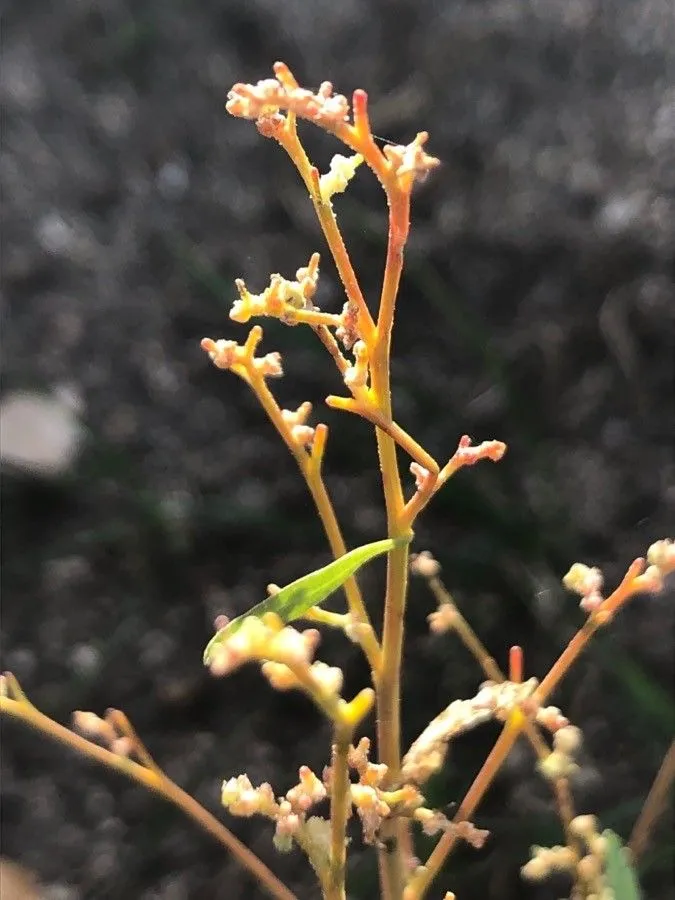
Author: Trosganzenvoet
Bibliography: Unknown
Year: Unknown
Status: accepted
Rank: species
Genus: Chenopodium
Vegetable: Unknown
Observations: Unknown
City goosefoot, known scientifically as Chenopodium urbicum, is a fascinating plant that belongs to the diverse Amaranthaceae family. Though the comprehensive historical bibliography of this plant remains elusive, Chenopodium urbicum is recognized for its presence in urban and disturbed habitats, often flourishing in environments where few other plants can thrive.
City goosefoot is notable for its resilience and adaptability. It typically grows in nutrient-rich soils found in city landscapes, gardens, and other disturbed sites. The plant features broad, lobed leaves and produces small, inconspicuous flowers that contribute to its understated charm. These characteristics enable City goosefoot to seamlessly integrate into various environments, from bustling urban parks to quiet, neglected lots.
Despite the lack of detailed observational data, the ecological role of Chenopodium urbicum can be inferred. Like other members of the Amaranthaceae family, it likely plays a crucial role in providing ground cover, preventing soil erosion, and contributing to local biodiversity. City goosefoot may also offer a food source for insects and other small wildlife, thereby participating in the complex web of urban ecological networks.
Though it may not possess the renown of some more conspicuous plants, City goosefoot is a remarkable example of nature’s ability to adapt and flourish in even the most altered of landscapes. Its understated presence in the urban ecosystem underscores the importance of ecological resilience and adaptive strategies in the face of environmental pressures.
Interest in Chenopodium urbicum continues to grow among botanists and urban ecologists, who seek to understand its role within city ecosystems better. Further research and observation will likely uncover more about this plant’s life cycle, its interactions with other species, and its potential applications in urban environmental management.
In summary, Chenopodium urbicum, or City goosefoot, represents a resilient and adaptable member of the Amaranthaceae family. Despite gaps in historical and observational information, its significance in urban ecology cannot be understated, offering rich opportunities for future study and appreciation.
Nld: trosganzenvoet
En: City goosefoot, Upright Goosefoot
Ca: Blet úrbic
Cs: Merlík městský
Nl: Trosganzenvoet, Trosganzevoet
Et: Linn-hanemalts
Fi: Kyläsavikka
Fr: Ansérine des villages, Chénopode des agglomérations, Chénopode des villages
De: Straßen-Gänsefuß, Städte-Gänsefuß, Strassen-Gänsefuß
He: Caf-avaz, כף
It: Farinello pi√® d’oca, Farinello pié-d’oca
Cy: Gŵydd-Droed Syth, Troed yr Ŵydd Syth-Ddail, Troed-yr-Ŵydd Talsyth
Taken Nov 18, 2021 by Diego Alex (cc-by-sa)
Taken Nov 18, 2021 by Diego Alex (cc-by-sa)
Family: Myrtaceae Author: (F.Muell.) K.D.Hill & L.A.S.Johnson Bibliography: Telopea 6: 402 (1995) Year: 1995 Status:…
Family: Rubiaceae Author: Pierre ex A.Froehner Bibliography: Notizbl. Bot. Gart. Berlin-Dahlem 1: 237 (1897) Year:…
Family: Sapindaceae Author: Koidz. Bibliography: J. Coll. Sci. Imp. Univ. Tokyo 32(1): 38 (1911) Year:…
Family: Asteraceae Author: A.Gray Bibliography: Pacif. Railr. Rep.: 107 (1857) Year: 1857 Status: accepted Rank:…
Family: Fabaceae Author: Medik. Bibliography: Vorles. Churpfälz. Phys.-Ökon. Ges. 2: 398 (1787) Year: 1787 Status:…
Family: Aspleniaceae Author: (Cav.) Alston Bibliography: Bull. Misc. Inform. Kew 1932: 309 (1932) Year: 1932…